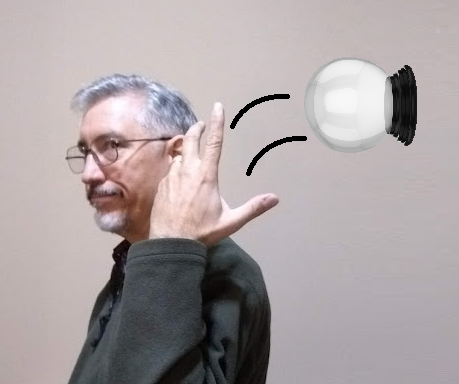A year ago, I made several predictions about what would happen in 2019. It’s time to assess my skill as a prognosticator.

Like any good soothsayer, I worded some of my predictions so that it’s difficult to say whether they came true or not. Also, I don’t have access to solid data that would confirm whether some came true or not. Still, here goes:
- Prediction: In 2019, you’ll see more science fiction books written by authors from previously underrepresented groups (women, people of color, LGBTQ, etc.) and these books will explore concepts of belonging and isolation, as well as bending our current notions of gender and race.
- Assessment: I think this one came true. Certainly 2019 saw the publication of SciFi novels written by women such as Elizabeth Bear, Margaret Atwood, Sarah Pinsker; and people of color such as Cadwell Turnbull, Tade Thompson, and Chen Qiufan; and self-identified members of the LGBTQ community such as Charlie Jane Anders, Annalee Newitz, and C.J. Cherryh. I haven’t verified the second part of my prediction, but I suspect it’s true.
- Prediction: The superhero theme in movies will
peak and begin a gradual decline. It’s been an amazing ride, but I believe the
market has saturated and audiences are getting tired.
- Assessment: It’s too early to tell if I was right. Four superhero movies came out in 2019 compared to seven in 2018, but one of them, Avengers Endgame, was the highest grossing film of all time.
- Prediction: Very few, if any, best-selling scifi books will feature faster-than-light drive. Most authors have accepted Einstein’s speed of light limit. FTL now seems hokey to readers.
- Assessment: I don’t have good data on this. Tiamat’s Wrath (Expanse #8) by James S. A. Corey contains gates to other star systems. Alliance Rising by C. J. Cherryh and Jane S. Fancher contains FTL with jump points. Obviously, FTL hasn’t gone away in SciFi, but it’s hard to say if it’s on a downward trend.
- Prediction: Having already peaked, the steampunk
and alternate history genres will continue to wane in books and movies, though
they may retain strength in the video gaming world. This genre trend in books
is troubling to me, since I enjoy writing steampunk and other alternative
history.
- Assessment: I got that one very wrong. Several good Steampunk novels came out in 2019, including The Secret Chapter (The Invisible Library #6) by Genevieve Cogman; Made Things (Made Things #1) by Adrian Tchaikovsky; Counter Culture by J.L. Merrow; Tarnished Are the Stars by Rosiee Thor; The Light at the Bottom of the World (The Light at the Bottom of the World #1) by London Shah; The Sinister Mystery of the Mesmerizing Girl (The Extraordinary Adventures of the Athena Club #3) by Theodora Goss; and White Hornet (The Viper and the Urchin #5) by Celine Jeanjean)
- Prediction: We’ll see more Solarpunk, and the Punk
Family will grow by a few more. I think there’s a great deal of uncharted
territory in the solarpunk genre and a general hunger for it among readers.
Most new ‘punks’ added in 2019 will be future-based, rather than alternative
histories.
- Assessment: Again, this prediction’s hard to evaluate. Certainly, The Weight of Light: A Collection of Solar Futures, edited by Clark A. Miller and Joey Eschrich is solarpunk and some have likewise classified Emergency Skin (Forward Collection #3) by N.K. Jemisin; and All City by Alex DiFrancesco as solarpunk. As to new ‘punks’ being added in 2019, I haven’t seen evidence of that.
- Prediction: There will be fewer dystopian young adult books, and there will be an upsurge in YA depicting a positive (though not utopian) future. I think dystopias have run their course for the time being, and readers are ready for less bleak outlooks.
- Assessment: I think there were fewer dystopian YA books in 2019, but among them were Internment by Samira Ahmed; The Farm, by Joanne Ramos; and The Water Cure by Sophie Mackintosh. Certainly, Peyton Skoczylas thinks this genre has run its course. However, I didn’t sense an upsurge in 2019 of YA SciFi involving positive futures.
- Prediction: Overall, as a genre, science fiction will do well in the visual media of movies, video games, and graphic novels, but not in traditional book form. Plenty of authors enjoy writing scifi, but readers will turn away from this genre in greater numbers. This is another prediction I find personally disappointing.
- Assessment: I couldn’t find data to confirm or deny the truth of this prediction. Plenty of authors did produce SciFi in 2019, but whether readership or revenues went up or down, I don’t know. SciFi in movies, video games, and graphic novels remained strong.
- Prediction: The trend toward series novels will
remain strong. Once modern readers make an emotional investment in a set of
characters and their fictional world, they want to know what happens after the
first novel, and after the next.
- Assessment: I nailed this one. In addition to the series novels mentioned above, Moon Rising (Luna #3) by Ian McDonald, Atlas Alone (Planetfall #4) by Emma Newman, Dark Age (Red Rising Saga #5) by Pierce Brown, and several other series novels were published in 2019.
Like the best oracle, my results are an ambiguous mixed bag, subject to interpretation. Perhaps I didn’t do so badly after all. Next week, check this space for predictions about 2020 by—
Poseidon’s Scribe
